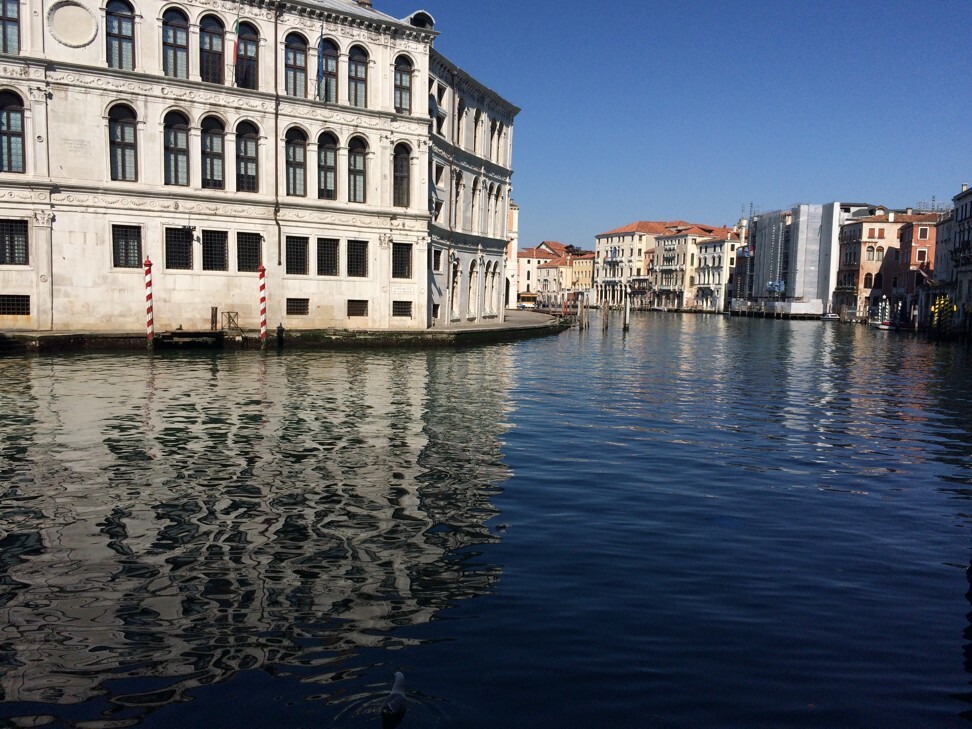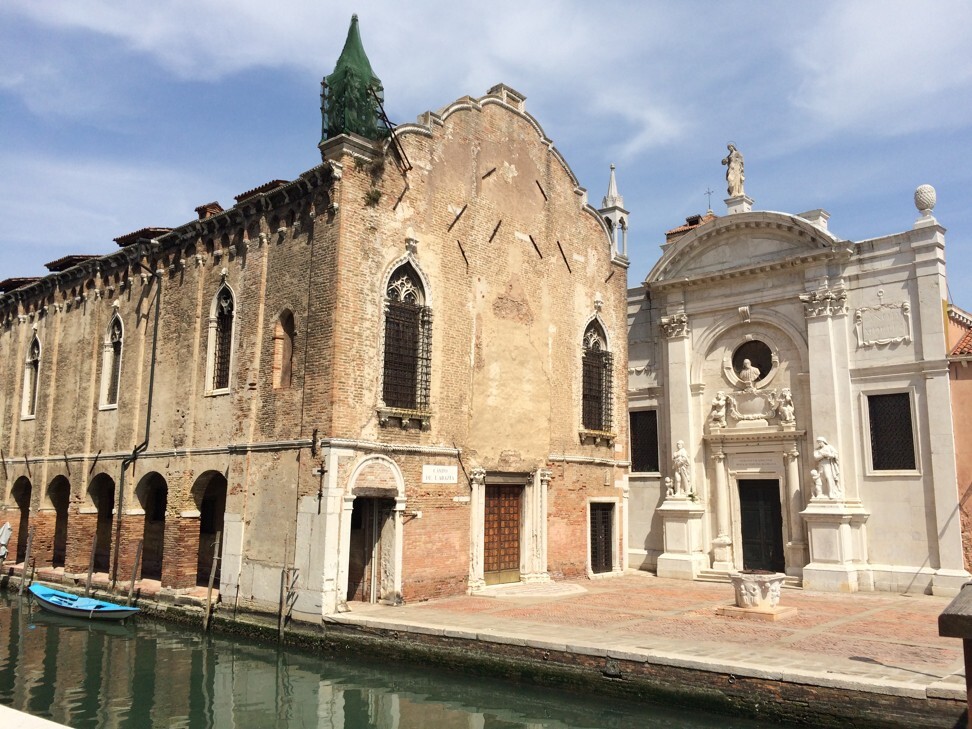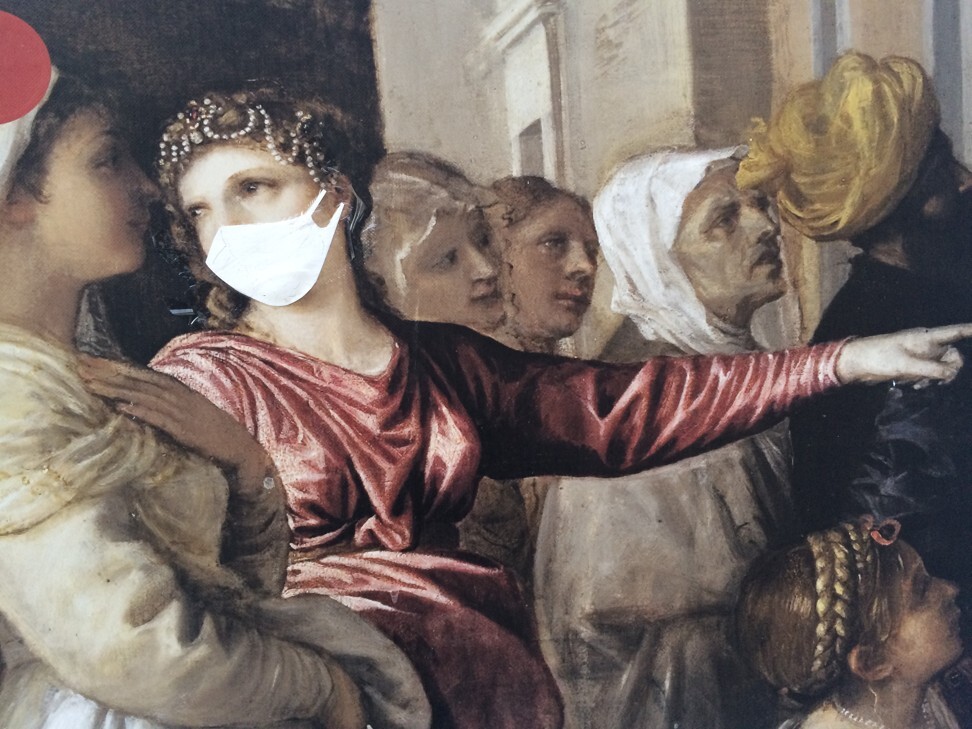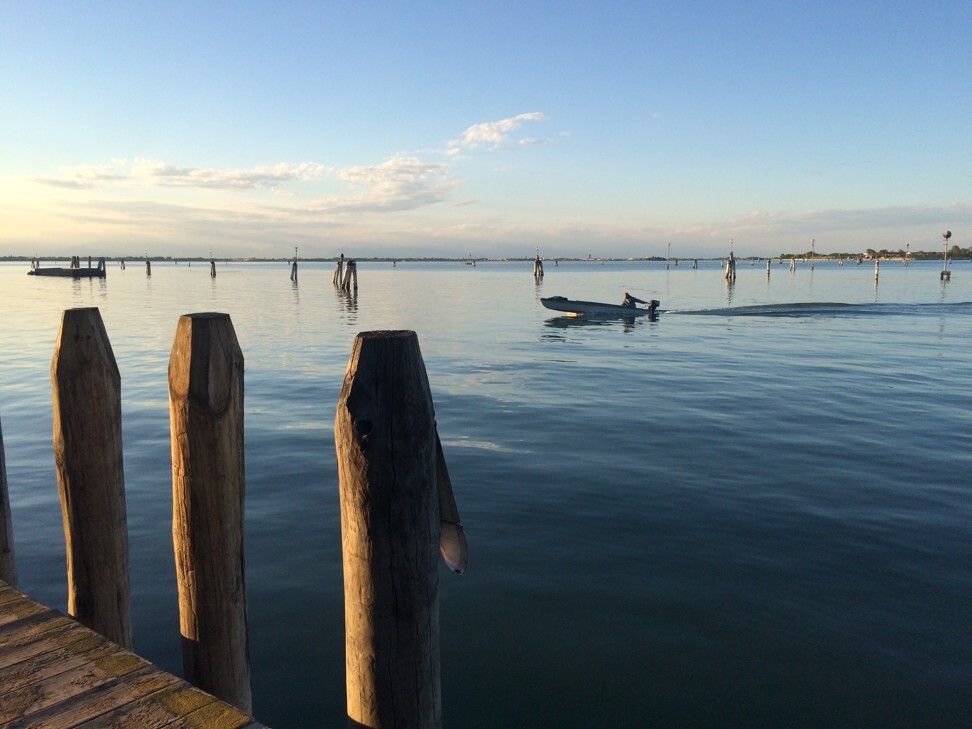
As Italy prepares to reopen, a last look at Venice in lockdown – empty streets and still waters
- A long-time resident takes a final walk through a truly peaceful La Serenissima, emptied of the 30 million tourists that visit each year
- Rediscovering the majestic Piazza San Marco, the colourful isle of Burano and the shimmering waters of the lagoon

My tiny apartment sits in a narrow alleyway between two canals, just off the Fondamenta Ormesini, a mile-long waterside promenade that is a popular rendezvous for Venice’s partygoers, its bars, trattorie and osterie packed till the early hours with teeming crowds enjoying bubbly prosecco and lethal spritz cocktails.
Today, though, as I walk through the city that has been my second home for 25 years, the only soul on the silent Fondamenta is a neighbour allowed out to walk his dog. The bars have been shuttered since the city went into lockdown on March 10.
With the still waters of the Ormesini canal no longer disturbed by chugging transport boats, the crystal-clear reflection of an ornate Gothic palace is broken only by a graceful black cormorant diving to catch fish. The murky, muddy depths have cleared to reveal tiny crabs and silver shoals of minnows weaving in and out of multicoloured algae.
I have spent more than two months rediscovering this unique city, emptied at a stroke of the 30 million tourists that visit each year. The effect is amplified by the fact there are no cars nor modern buildings in this ageless City of Stone, and with the end of lockdown approaching, I am savouring a final tour through the deserted streets, courtyards and piazzas.

As I cross the main bridge into Cannaregio’s ancient Jewish ghetto, an orthodox Hasidic Jew with distinctive black homburg hat and long curly locks hurries past, pushing a shopping trolley loaded with provisions from a supermarket.
The Campo del Ghetto Nuovo houses some of the world’s oldest synagogues and is usually packed with children playing football, but today the only people to be seen are a couple of soldiers posted in a guardhouse, a reminder of when the community feared attacks from terrorists rather than an invisible virus.
I carry on past the anonymous-looking Sant’Alvise parish church and stop on the Sensa canal, opposite the ornate palazzo that was the home of painter Tintoretto. Printmaker Roberto Mazzetto runs the Tintoretto Art School here, and normally his students would be sketching alongside the canal.
Now, the only sign of life is a dim light inside, Mazzetto working on his own creations. Around the corner, at the Dal Mistro squero, one of the last boatyards in which the iconic Venetian gondolas are constructed, the carpenter’s two fluffy cats stage a lonely vigil on a wooden bridge.
The Sensa canal comes out by the 10th century church Chiesa dell’Abbazia della Misericordia, which has been deconsecrated and can be rented for art exhibitions and gala dinners. At the back of the church, I come upon a sign in English for The Chapel Club. This turns out to be a new speakeasy bar; somewhere to discover when such establishments open again.

Rather than follow the ubiquitous yellow signs, I wander over to the Piazza San Marco by following the folderi (a dialect term meaning “short cuts”). With no tourists to dodge – not a single person in view, in fact – I find myself noticing the seasonal scents of elderberry and jasmine, and the perfumed purple wisteria that tumbles over a crumbling red-brick wall from one of the city’s many hidden gardens.
Even the graffiti has a certain appeal; the red hearts, Juventus and Milan football slogans, and murals by a local would-be Banksy are reminders that Venice is not a living museum or postmodern Disneyland, but a vibrant, warts-and-all working city.
In a tiny courtyard I would normally rush past, a teenage girl skips rope like a trained boxer, jumping to the rhythm of Queen’s We Are the Champions blaring from an upstairs bedroom. Music is the one thing that breaks the silence, everything from the Four Seasons, by local composer Antonio Vivaldi, to Julio Iglesias’ crooning Begin the Beguine, in Italian, coming from inside people’s homes.
A narrow alleyway brings me out opposite the Ai Miracoli, a tiny, flawless Renaissance gem of a church, and instead of gondolas filled with tourists snapping selfies, a single slim sandolo boat glides over the water, propelled by a rower who, for the time being, can enjoy the maze of canals without having to be mindful of speeding water taxis.

The immense Santa Maria Formosa square is usually bustling with shoppers looking for Murano glass and carnival masks, but today just offers sustenance for the locals, courtesy of a fruit and vegetable stall and a newspaper kiosk.
After a few minutes of zigzagging left then right, a narrow calle opens out into the expanse of the Piazza San Marco.
Together, the piazza and the basilica of San Marco are among the world’s most beautiful sights, even when packed with people. They are far more awe-inspiring in this splendid isolation. Chairs are piled high outside Caffè Florian and Ristorante Quadri while pigeons strut around grumpily, missing the tourists who feed them seed.
Instead of the strains of a Strauss waltz played by the Florian’s string quartet, my walk across the piazza is accompanied by the shrieks of gulls. An angry flock encircles then attacks a buzzing drone, which is being used to help make sure people like me have a valid reason for being outdoors (a journalist pass is my key to freedom). I understand why Venetian friends have decided seagulls have their uses, after all.

A limited water bus service has been maintained throughout the confinement, allowing those who venture out with the correct papers to travel around not just the city but the whole lagoon.
I have already enjoyed being the only passenger on Vaporetto Numero Uno as it slowly chugged past the palaces and churches that line the Grand Canal and, on another day, I boarded the Motonave ferry for the Lido, a narrow strip of sandy beach that separates Venice from the Adriatic, and where stars and celebrities are still expected in September for the 2020 edition of La Mostra, the world’s oldest film festival. But for this last taste of a deserted Venice, I cut back from the Doge’s Palace to the Fondamente Nuove quay.
Ferries usually depart every few minutes, not just for the lagoon island of Burano, my destination today, but also the islands of Sant’Erasmo and Vignole, popular for weekend picnics, and the mainland town of Treporti, from where campers on immense sites embark for Venice day trips. The bars and cafes on the quay usually do a roaring trade in tramezzini sandwiches, wine, beer and pizzas. Today, though, hardly a boat is in sight and I can’t even buy a cappuccino.

Normally, a long queue would have started forming half an hour before the ferry departs, followed by an almighty rush for seats, everyone jamming themselves in like sardines for the hour-long ride.
I’m joined on my trip by just four other passengers: post-lady Anna, a chatty Italian-Ethiopian who has made this journey throughout the lockdown to deliver the mail; a florist carrying pots of orchids ordered by one of the 20-plus residents still living on Torcello, the island where the earliest settlers in the area landed 1,500 years ago; and two university ecologists, who regularly head out to check pollution levels, as the sudden absence of motorised transport has had a positive effect on biodiversity.
The ferry bypasses the usual first stop, the magical cemetery island of San Michele, where American poet Ezra Pound and Russian art critic and ballet impresario Sergei Diaghilev rest in peace, because it is out of bounds to everyone at this time, and no one gets on or off at the lighthouse stop on Murano, where crowds would normally be rushing to the island’s glass-blowing foundries and boutiques.
The ferry seems to float across the shimmering, still waters of the lagoon, past abandoned fortified islets and the swaying reeds of the barene wetlands, with its graceful herons and sleek swans. Ducks paddle around, undisturbed by the hunters who would normally be out in their boats.

Burano’s Pisa-like leaning church tower heaves into view as we prepare to dock. I spend an hour wandering along the island’s criss-crossing canals and narrow lanes, where fishing boats moored outside brightly painted cottages act as a magnet for Instagramers in normal times. I had not considered a trip to Burano for years as this once sleepy community is usually inundated with tourists, a daily invasion that is far more overwhelming than that in Venice itself.
The sun is beginning to set as the ferry arrives back at the Fondamente Nuove, and a quarter of an hour later I am back in Cannaregio, heading for the Baia del Re, the King’s Bay.
Even before the lockdown, tourists rarely ventured to this public-housing quarter – there are no palaces or famous churches, not even a bar or trattoria. But what the Baia del Re does have are views over the lagoon that stretch as far as the Dolomite mountains.
Locals and lovers wander out to witness an explosion of colours against a cloudy sky, a spectacular show unchanged from centuries ago, when the likes of Turner, Canaletto and Francesco Guardi were inspired to paint their celebrated landscapes of La Serenissima.